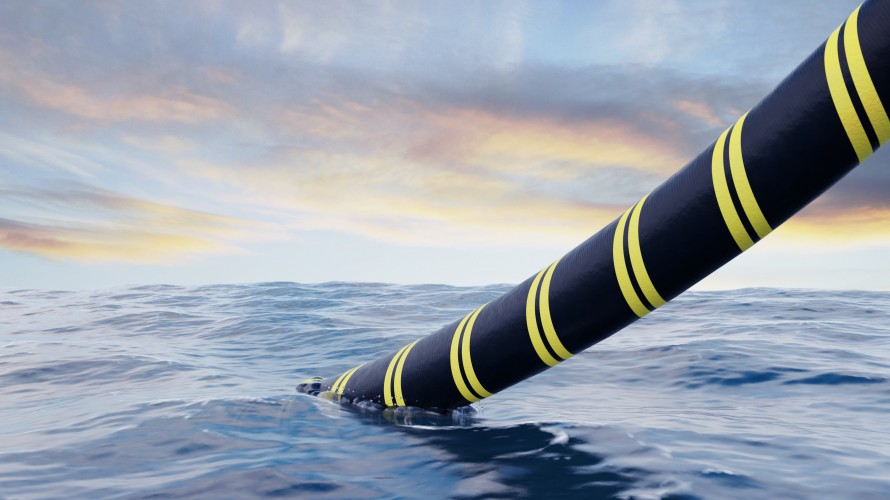Insight
23 October 2020
Cable Burial Risk Assessment: An Integral Part of A Complete Risk Mitigation Strategy

Cable Burial Risk Assessments (or CBRAs) are becoming increasingly prevalent for subsea telecom, power, and offshore wind installations. Alongside regular cable surveys, regional fisheries analyses, marine liaison efforts, and strategic guard vessel deployment, a comprehensive CBRA forms a key component of a holistic risk mitigation strategy. A CBRA focuses on optimising the depth of lowering or cable burial. It has been suggested that many past projects, specifically for telecoms and power cables, have been unnecessarily conservative in their desired cable burial depth. This can prove significantly more costly and complicate installation, increasing the likelihood that cable damage will occur during the installation process.
Some past projects have gone as far as to ensure that cables would be protected from even the largest of potential anchor strikes, even if those large anchors are possessed by only 1 in 10,000 vessels, and the odds of such a strike happening are incredibly minuscule. Therefore, the CBRA aims to agree an “acceptable level of risk” with the client, within which appropriate burial depths would protect the cable.
Carbon Trust's Report on Cable Burial Risk Assessment Methodology
In 2015, the Carbon Trust published a report titled “Cable Burial Risk Assessment Methodology: Guidance for the Preparation of Cable Burial Depth of Lowering Specification,” which has since been referenced by many reputable and informed sources, including BOEM (the Bureau of Ocean Energy Management), the Business Network for Offshore Wind, and Marine Scotland.
Elements Considered in CBRA: Physical, Geological, and Hydrological Impacts
The CBRA takes many elements of the proposed cable route into account when optimising the route and depth of lowering. Some of these factors relate to physical, geological, and hydrological impacts of the proposed cable route. For example, analysts examine local seabed mobility, water depth, tectonic activity, currents and wave energy, as well as the overall composition of seabed type. Hard rocky substrate versus silt or clay sediments can make a world of difference in terms of cable burial and stability.
Social and Anthropogenic Impacts: Fishing and Dredging Activities
Similarly, the potential for social and anthropogenic impacts relating to other marine users must also be considered. Human activities cause approximately 70% of cable faults, and a total of 65% are due to fishing activities (ICPC; Carter et al. 2009). Dredging, in particular, can result in a high risk to subsea cable assets. Studies have shown that benthic scars due to dredging gear can penetrate the sediment to a depth of 20 cm (Krost et al. 1990); some can still be identified on the seafloor more than five years after dredging ceased in the area (Bernhard, 1989, cited in Krost et al. 1990). Compounded spatially and/or temporally, dredging can have a significant impact on regional sediment characteristics. It is growing increasingly important to monitor trends in established fisheries that may be exhibiting spatial or temporal shifts due to impacts of climate change. Taking all of these aspects into account, we are better able to predict which areas along a cable route are likely to be vulnerable to a given threat over the course of its lifetime. This is where optimisation of the depth of lowering comes into play.
The Burial Protection Index (or BPI) was developed in the 1990s for application to subsea telecom cables. It was widely used throughout the time period, but its limitations (often resulting in over-conservative burial measures) necessitated a more holistic approach. With current CBRA guidelines, route planners and the cable client must agree an acceptable level of risk within which the cable assets should be protected by burial. This requires the acceptance of a determined measure of risk in exchange for lower installation project costs and decreased installation risks. Cable faults may still occur beyond the agreed protective measures, but that minimised risk falls on the client over the lifetime of the project.
With both subsea telecom and power cables, downtime due to a cable fault can have many detrimental impacts. For one, repairing faults is very costly, both in terms of the cable repairs themselves and in terms of managing a loss of operative abilities. Additionally, the potential hit to the reputability of the cable provider also weighs heavily.
As we witness a global increase in the number of offshore wind farms slated for installation, subsea power cable networks will become more numerous and potentially more complex. Offshore renewables are a key part of global plans to meet carbon reduction goals, but to continue to fortify their position as an efficient and reliable power source on a national scale, we must ensure that cable-related incidents and associated downtime are kept to a minimum.
Holistic Risk Mitigation Plan
For these reasons, an initial CBRA for a project should be only one facet of a holistic risk mitigation plan. Such a plan would also include regular surveys and inspections to ensure that optimal depth of lowering is maintained and any risk points are identified and mitigated as soon as possible. Additionally, regional marine liaison efforts and strategic guard vessel deployment can effectively eliminate the risk of anthropogenic cable faults in a specific area identified as vulnerable; oftentimes, such adjacent solutions may be more cost-effective than opting for overly cautious depths of burial. Proactively managing regular survey work enables cable assets to be better protected over their lifetime while optimising initial project investments.
For more information, please see the following sources.
Carbon Trust (2015). “Cable Burial Risk Assessment Methodology: Guidance for the Preparation of Cable Burial Depth of Lowering Specification.” Accessed on: 29 September 2020. https://www.carbontrust.com/resources/cable-burial-risk-assessment-cbra-guidance-and-application-guide
Carter L., Burnett D., Drew S., Marle G., Hagadorn L., Bartlett-McNeil D., and Irvine N. (2009). Submarine Cables and the Oceans – Connecting the World. UNEP-WCMC Biodiversity Series No. 31. ICPC/UNEP/UNEP-WCMC.
Krost, P., Bernhard, M., Werner, F., Hukriede, W., 1990. Otter trawl tracks in Kiel Bay (Western Baltic) mapped by side scan sonar. Meeresforsch 32, 344–353.
